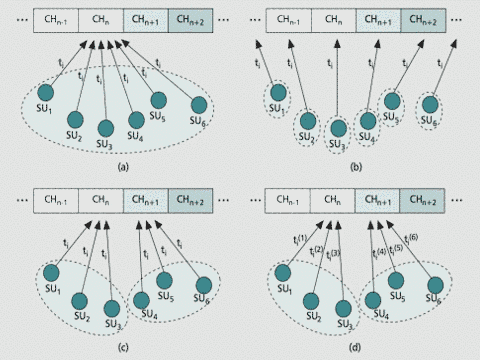
Software-defined wireless networking (SDWN) is an emerging paradigm in the era of the Internet of Things. In cloud-based SDWNs, resource management is separated from the geo-distributed cloud, forming a virtual network topology in the control plane. Thus, a centralized software program is able to control and program the behavior of the entire network. In our work, we focus on resource management in cloud-based SDWNs, and discuss the competition and cooperation between cloud service providers.
We present a Nash bargaining game approach to process the resource trading activity among cloud service providers in cloud-based SDWNs. Utility functions have been specifically considered to incorporate operation cost and resource utilization. Illustrative results indicate that cooperation is able to generate more benefits than competition. Moreover, resource sharing among cloud service providers has great significance in efficiently utilizing limited resources and improving quality of service.

In the era of the Internet of Things, all components in intelligent transportation systems will be connected to improve transport safety, relieve traffic congestion, reduce air pollution, and enhance the comfort of driving. The vision of all vehicles connected poses a significant challenge to the collection and storage of large amounts of traffic-related data. In our work, we propose to integrate cloud computing into vehicular networks such that the vehicles can share computation resources, storage resources, and bandwidth resources. The proposed architecture includes a vehicular cloud, a roadside cloud, and a central cloud. Then we study cloud resource allocation and virtual machine migration for effective resource management in this cloud-based vehicular network. A game-theoretical approach is presented to optimally allocate cloud resources. Virtual machine migration due to vehicle mobility is solved based on a resource reservation scheme.

Vehicle-to-Grid (V2G) technology enables bidirectional energy flow between electric vehicles (EVs) and power grid, which provides flexible Demand Response Management (DRM) for the reliability of smart grid. EV mobility is a unique and inherent feature of the V2G system. However, the inter-relationship between EV mobility and DRM is not obvious. In our work, we focus on the exploration of EV mobility to impact DRM in V2G systems in smart grid. We first present a dynamical complex network model of V2G mobile energy networks, considering the fact that EVs travel across multiple districts, and hence EVs can be acting as energy transporters among different districts. We formulate the districts’ DRM dynamics, which is coupled with each other through EV fleets. In addition, a complex network synchronization method is proposed to analyze the dynamic behavior in V2G mobile energy networks. Numerical results show that EVs mobility of symmetrical EV fleet is able to achieve synchronous stability of network and balance the power demand among different districts. This observation is also validated by simulation with real world data.

It is envisioned that home networks will shift from current machine-to-human (M2H) communications to the machine-to-machine (M2M) paradigm with the rapid penetration of embedded devices in home surroundings. In our work, we first identify the fundamental challenges in home M2M networks. Then we present the architecture of home M2M networks decomposed into three subareas depending on the radio service ranges and potential applications. Finally, we focus on QoS management in home M2M networks, considering the increasing number of multimedia devices and growing visual requirements in a home area. Three standards for multimedia sharing and their QoS architectures are outlined. Cross-layer joint admission and rate control design is reported for QoS-aware multimedia sharing. This proposed strategy is aware of the QoS requirements and resilience of multimedia services. Illustrative results indicate that the joint design is able to intelligently allocate radio bandwidth based on QoS demands in resource- constrained home M2M networks.

Cooperative spectrum sensing is a promising technique in cognitive radio networks by exploit- ing multi-user diversity to mitigate channel fading. Cooperative sensing is traditionally employed to improve the sensing accuracy while the sensing efficiency has been largely ignored. However, both sensing accuracy and efficiency have very significant impacts on the overall sys-tem performance. In this article, we first identify the fundamental trade-off between sensing accuracy and efficiency in spectrum sensing in cognitive radio networks. Then, we present several different cooperation mechanisms, including sequential, full-parallel, semi-parallel, synchronous, and asynchronous cooperative sensing schemes. The proposed cooperation mechanisms and the sensing accuracy-efficiency trade-off in these schemes are elaborated and analyzed with respect to a new performance metric achievable throughput, which simultaneously considers both transmission gain and sensing overhead. Illustrative results indicate that parallel and asynchronous cooperation strategies are able to achieve much higher performance, compared to existing and traditional cooperative spectrum sensing in cognitive radio networks.